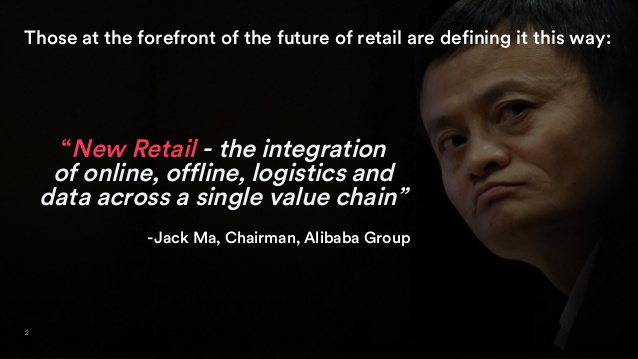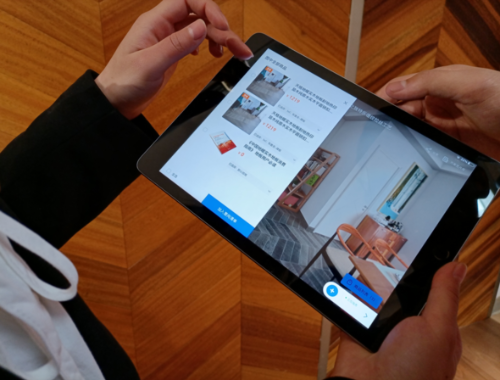Alibaba: New Retail model goes beyond e-commerce
Chinese e-commerce giant is building an ecosystem of digital services which it says will see customer experience enhanced by augmented reality, AI, and facial recognition
Alibaba has a vision for the future of retail where there is no distinction between online and offline shopping, and the customer experience is enhanced by augmented reality, artificial intelligence (AI) and facial recognition.
To facilitate its vision, Alibaba is pioneering its ‘New Retail’ model and striving to go beyond e-commerce, instead building an ecosystem of digital services that can be tapped into by consumers, sellers, service providers and content providers.
Representatives from the largest retail commerce company were in Sydney this week for the Online Retailer conference. According to John O'Loghlen, director of business development, Australia and New Zealand for Alibaba Group, the opportunity for local brands to engage with new markets and customers through e-commerce continues to be huge.
“As an industry, e-commerce is still in its infancy and the opportunities it presents for local businesses are enormous,” O’Loghlen told CMO. “One of the reasons we have a presence in Australia and New Zealand is to work with local businesses to help them understand and guide them through the evolving regulatory landscape in e-commerce to ensure they are best positioned for success.
“Longer-term, we expect Australian and New Zealand businesses will continue to see success in China via e-commerce channels. They have a natural advantage because their products are incredibly well perceived by Chinese consumers, while Australia and New Zealand’s free trade agreements with China continue to position both as leading trade partners.”
Digital dominance
And Alibaba should know, being the largest retail commerce company in the world in terms of gross merchandise value. As of March this year, it had 552 million annual active consumers on its China retail marketplaces.
Its two biggest marketplaces are Taobao Marketplace, China’s largest mobile commerce destination, and Tmall, China’s largest third-party platform for brands and retailers. There are more than 2000 Australian brands and 700 New Zealand brands on Tmall and Tmall Global, many of which entered China for the first time through the platforms, and this continues to grow almost daily.
In fact, O’Loghlen said Australian brands are among the strongest performing on Tmall Global, and last year, Australia ranked as the third-highest selling country on the platform. Australia also ranked as the third-highest selling country into China during Alibaba’s 11.11 Global Shopping Festival in 2017, with local brands, Swisse and Bio Island, ranking in the top five most imported brands during the sale.
“We have plans to introduce another 1000 local brands to Tmall and Tmall Global over the next three years. However, our operations and focus for Australia and New Zealand does not end at ecommerce. We have also successfully introduced Alipay and Alibaba Cloud to this market,” he said.
In China, Alibaba is pioneering its New Retail model, which combines the best of both in-shop and online retail experiences.

“With New Retail, our goal is to allow businesses to succeed in the digital era. This means helping traditional retailers to restructure and enhance the way they operate, which can touch everything from customer experience, to inventory management, and retail spaces,” O’Loghlen explained.
To help illustrate how it works, Alibaba recently set up two temporary pop-up stores in Sydney and Melbourne featuring augmented reality mirrors, facial recognition payment and interactive in-store mobile phone games.
“This has the potential to reshape what retailers can offer and how they interact with their customers,” O’Loghlen said.
Recently, Tmall partnered with Ford to unveil the Super Test-Drive Center in Guangzhou. Customers were able to choose from up to 100 Ford cars from an unmanned vehicle vending machine for a three-day test driving using the Tmall or Taobao app. All up, the experience of ordering a test drive vehicle took less than 10 minutes.
“This created a new and convenient way for a traditional retailer to engage with their customers through digital and mobile technology,” he said.
Since 2015, Alibaba has also successfully incubated 56 Hema stores across China. These are fully digitised supermarkets and smartphone-powered experiences where customers can browse the shelves and shop either in-store or from their homes.
Hema provides consumers with a 3-in-1 retail experience that encompasses technology-driven fulfilment of online delivery, in-store purchases, as well as in-store consumption. Customers scan QR codes for product information, while fresh food is prepared in-store by chefs, and customers within a three-kilometre radius of the store have their goods delivered within 30 minutes.
By making New Retail a core strategy for the business, Alibaba is hoping to stay at the forefront of innovation in e-commerce.
In terms of future opportunities, Alibaba sees many for online retailers to create a new type of customer-centric experience, leveraging the best of both online and offline worlds. Earlier this year, Tmall introduced a ‘try before you buy’ option for fashion shoppers in China. Select customers are able to receive clothes without payment and try them for up to seven days. If they decide to keep them, the cost is automatically deducted from their Alipay accounts. If not, shoppers return them free of charge.
As of June, 14,000 products from 15 Chinese and international brands were participating in the service.
Behind the scenes, AI is the digital infrastructure allowing the platforms, O’Loghlen said.
“In fact, Alibaba has put artificial intelligence at the centre of our e-commerce operations, helping to guide consumers through their ‘customer journey’, from product discovery, to product purchase and product delivery,” he continued.
“For our customers, this means increasingly personalised recommendations, precise search results, and search results that show customers products and services they may not have realised they wanted. It also means online virtual storefronts that provide information tailored to individual users based on their shopping history and preferences, AI-enabled image search technology that serves the needs of users and enhances overall consumer engagement for merchants, customer-service chatbots that can resolve customers issues without the need for human involvement, and orders that can be dispatched and delivered in days instead of hours.”
Earlier this month, Alibaba launched the Fashion AI, a platform that provides AI-powered fashion mix-and-match suggestions for consumers based on over 500,000 sources data of fashion and dressing tips from stylists on the Taobao and Tmall, as well as the store product images and mix-and-match recommendations by merchants.
This AI-enabled solution is also extended to offline shopping. In selected offline stores, for instance, consumers can take the RFID-embedded clothing to the smart fitting room, where the screen inside the room will automatically recognise the selection of garments and propose items in different styles, which consumers can select and ‘try on’ in the digital fitting room. Consumers can then choose whether to directly purchase the items instore or place the order online.
While AI is a huge focus for Alibaba in China, the company has also brought the technology to Australia to benefit local partners and consumers. For example, Alibaba Cloud partnered with Australia’s online retailer, The Iconic, to launch visual search tool, Snap to Shop. Developed with Alibaba Cloud’s machine learning capabilities, the tool allows users to search for clothing, sportswear and accessories by uploading a photo to the app. The app reviews an assortment of 50,000 products from 800 brands.
According to O’Loghlen, Alibaba Group’s vision is to build the entire operating infrastructure to allow businesses to expand globally. It has the ambitious target of creating 100 million jobs, supporting 10 million profitable businesses and serving 2 billion consumers across the world – one third of the global population – in the next 20 years.
To help achieve this, Alibaba is going building an ecosystem of digital services that can be tapped into by consumers, sellers, service providers and content providers. To support these efforts locally, Alibaba Cloud launched a data centre in Sydney in 2016.
“We are also working to help local businesses meet the preferred payment method of the record numbers of Chinese tourists, migrants, and students coming to Australia through Alipay,” O’Loghlen said.
This includes already working with around 10,000 merchants in Australia who use Alipay, and following an agreement with Cabcharge Australia earlier this year, 22,000 taxis now accept Alipay across Australia.
(Source: cmo.com.au)
-

Easy Home joins hands with Alibaba to increase the capital of Lie Flat Designer!
-

The sales of software home furnishing on Ali platform was 4.042 billion yuan in March, up 62.7% year-on-year!
-

4 hours and 30 minutes export volume exceeded the first day of last year
-

Alibaba's layout lays out a new track of wise manufacturing

 沪公网安备31010402003309号
沪公网安备31010402003309号



